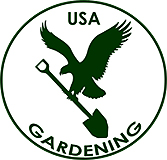 GARDENING
TIPS
GARDENING
TIPS

MECHANICAL
PEST CONTROL |
|
|
|
|
|
|
HOW TO PREVENT INFESTATIONS OF
FUNGUS GNATS
|
Using sand to get rid of fungus
gnats
|
|
December 14, 2022 - By Kéven
Prescott, Vegetable Gardener -
Horticulturist |
|
|
|
| |
|
|
 |
|
|
|
|
|
Dark-winged fungus gnat (Soil gnat, Sciaridae) |
|
|
English name: Dark-winged Fungus Gnat
French name:
mouche de terreau, sciaride
Latin name: Sciara sp. /
Bradysia sp.
Class: Insects
Order: Diptera
Family: Sciaridae |
|
|
Several people asked me why I put sand over my
soil.
The reason is simple, let me explain why! |
|
|
|
|
|
|
|
|
|
|
The larvae of the fungus gnat feed on fungi, organic
matter, and sometimes plant roots.
In order for
their larvae to feed, the flies will lay their eggs in
the soil. The larvae will move within the first few
centimeters of substrate to feed. This is so they can
eventually become adults and lay their own offspring.
Chicken manure is highly sought after by fungus
gnats (ideal organic matter).
To break the cycle,
putting a layer of sand about 3/8 inch deep over your
soil is a very effective solution. The gnat will search
for a suitable place to lay its eggs, but when it
arrives on the sand, it will not find the desired
location and will continue to search for the suitable
spot. The gnat will not find it and therefore will not
lay any eggs. |
|
|
|
|
|
|
|
|
|
|
 |
|
|
|
|
|
Cycle interrupted |
|
|
The life cycle of the fungus gnat is 28 days. Therefore,
before having no more flies at all, we must wait for 28
days after putting sand on the soil of all our plants.
So it's a simple, effective and low-cost trick! |
|
|
|
This trick is rarely mentioned in nurseries. The reasons
are simple, sand costs practically nothing, it's not
profitable, or they simply don't know the trick. |
|
|
|
|
|
The cost of this method |
|
|
$3 for 20 kg of fine sand (sandbox sand).
You may be offered products that are often very
expensive and very ineffective. Some adult flies may be
killed, but these products will never stop the insect
cycle.
Biological control (Nematodes, BTI) is also effective
but more expensive than using sand. |
|
|
|
|
 |
|
|
|
|
|
|
|
|
|
|
| Tips to avoid fungus
gnats : |
| |
- Do not put chicken manure
in plants that you bring indoors during the winter.
- Put sand on your soil one month before bringing
your plants indoors. (I have sand all year round on
plants that will come back inside the house).
|
| |
| By using the sand technique,
you will have no flies at the entrance and even less
afterwards. |
|
|
| So why not to act preventively! |
|
|
|
|
|
|
| Video by Kéven Prescott related
to this article :
The Fungus Gnat |
|
| |
| |
|
Kéven Prescott,
Monsieur Salut! - Vegetable
Gardener - Horticulturist |
| |
| |
|
See other articles on the same topic : |
| |
| |
| Click here ---> Article
categories :
Gardening tips
Seeds & seedlings |
| |
| |
|
Check out the list of
all articles |
|
|
|
|
|
Search for your article topic here : |
|
|
|
|
|
|
|
|
|
|
|
|
| -
Photos of the article - |
| |
 |
|
| Sand to get rid of fungus gnats |
| |
| |
|
|
| |
 |
|
| Sand on the top of pots for
fighting against fungus gnats |
| |
| |
|
|
| |
| |
 |
|
| Dark-winged fungus gnats |
| |
| |
| |
| |
| |
| |
|
|
| |
| |
| |
